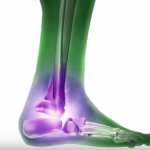BUN tests evaluate kidney function and the levels of urea and nitrogen found in the blood. BUN test stands for Blood, Urea, and Nitrogen test that are primarily done along with creatinine test to assess kidney functions, diagnose kidney disease, and monitor people having acute or chronic dysfunctions of kidney. The BUN to creatinine ratio usually provides much more precise information regarding kidney function and the possible underlying causes as compared with creatinine levels alone. Additionally, BUN test can be used for evaluating a patient’s overall health status.
Urea is a byproduct of protein metabolism formed within the liver, which releases it into the blood plasma and carried to the pair of kidneys followed by release into urine. There also exist small amounts of nitrogen in the blood along with urea. Now if the kidneys function irregularly due to damage or disease, then urea levels increase in the blood which is harmful for our body.
When to take the test?
BUN tests are done as part of both BMP (Basic Metabolic Panel) and CMP (Comprehensive Metabolic Panel) and are broadly used:
- As part of routine health checkups
- For checking if the kidneys are properly functioning before starting certain drug therapies
- If an acutely ill patient arrives in the emergency room or gets admitted to a hospital
As stated earlier, BUN test is done along with creatinine tests or renal panel if some kind of kidney problem is suspected. Some of the indication or signs of kidney dysfunction are as follows:
- fatigue, poor appetite, lack of concentration, trouble sleeping,
- puffiness or edema, especially around the eye region or face, abdomen, wrists, thighs, and ankles
- Passage of bloody, foamy or coffee colored urine; reduced urine volume
- Difficulty urinating, including feeling burning sensation or abnormal discharge while urinating, change in urine frequency particularly at night
- Pain in the mid-back region, below ribs, or near to the location of kidneys
- High blood pressure
Additionally, BUN is also ordered for:
- For periodic or regular monitoring of kidney function for those having chronic disease like diabetes, myocardial infarction, and congestive heart failure
- For periodic or regular monitoring kidney functions and treatments in patients with known kidney impairments
- Before and after certain drug treatments for regulating kidney function
- Alongside creatinine tests if CT scan is scheduled
- Periodic or regular monitoring to check the effectiveness of kidney dialysis.
What does BUN test result indicate?
High BUN levels
Increased or higher BUN levels mean kidney impaired kidney functions that can be a result of kidney damage, disease, or failure. It can also happen because of reduced blood flow to renal organs due to congestive heart failure, stress, shock, severe burns, recent heart attack, conditions impeding urine flow, or even dehydration. High BUN values can also result because of high blood pressure or diabetes which directly affects the renal organs.
Many medicines can cause high BUN values. In such cases, patients must definitely detail out all the prescribed and non-prescribed medicines to their doctor.
Other conditions that can elevate BUN concentrations include excessive protein breakdown, a significant increase in protein in diet, gastrointestinal bleeding due to increased protein in blood, Addison’s disease, or tissue damage from severe burns.
Increased BUN to creatinine ratios arise with sudden kidney failure caused by severe dehydration or shock. A very high ratio can be caused by respiratory tract or digestive tract bleeding.
Low BUN levels
Low BUN values are uncommon and not much of a concern. Low BUN values can result due to severe liver disease, very low protein diet, malnutrition, and a condition of over hydration (excessive fluid volumes in the body). However, BUN test is not used to diagnose these conditions usually.
Women and children have lower BUN values than men depending upon their bodies’ ability to break down proteins.
Low BUN to creatinine ratio is caused by low-protein diet, severe muscle injury termed rhabdomyolysis, cirrhosis, pregnancy or incorrect antidiuretic hormone secretion levels.
Normal BUN range
The normal BUN value is usually 6 to 20 mg/dL. Following is a listing of normal values called “a reference range”. It may be noted that this is just a guide, and that these ranges vary among different laboratories and a particular lab might have a different range to define normal values. Nonetheless, the values a patient’s lab report consists will be evaluated by the patient’s doctor based upon the patient’s health and other aspects. This means that if a value falls outside these listed normal values, it can still be correct for the patient or for that particular lab.
BUN values:
Adults: 10-20 milligrams per deciliter (mg/dL)
Children: 5-18 mg/dL
BUN-to-creatinine ratio
Adults: 6-25 mg/dL with 15.5 being optimum value
Other facts about BUN
A wide range of drugs can elevate BUN levels. Drugs which can reduce BUN levels are streptomycin and chloramphenicol. Patients must never forget to detail out their medications to their healthcare.
Both increased and decreased levels of BUN can be observed through the duration of a normal pregnancy.

